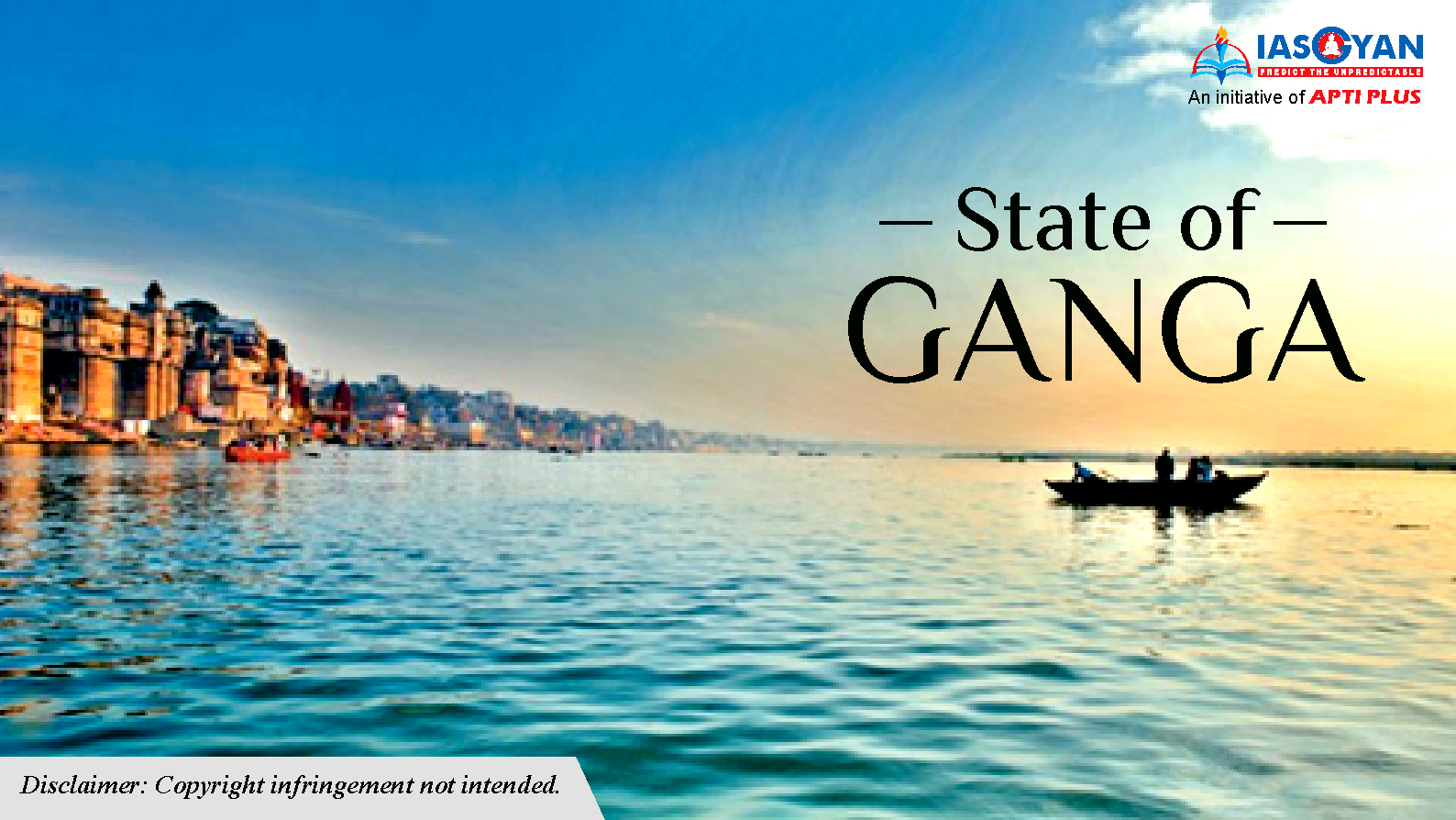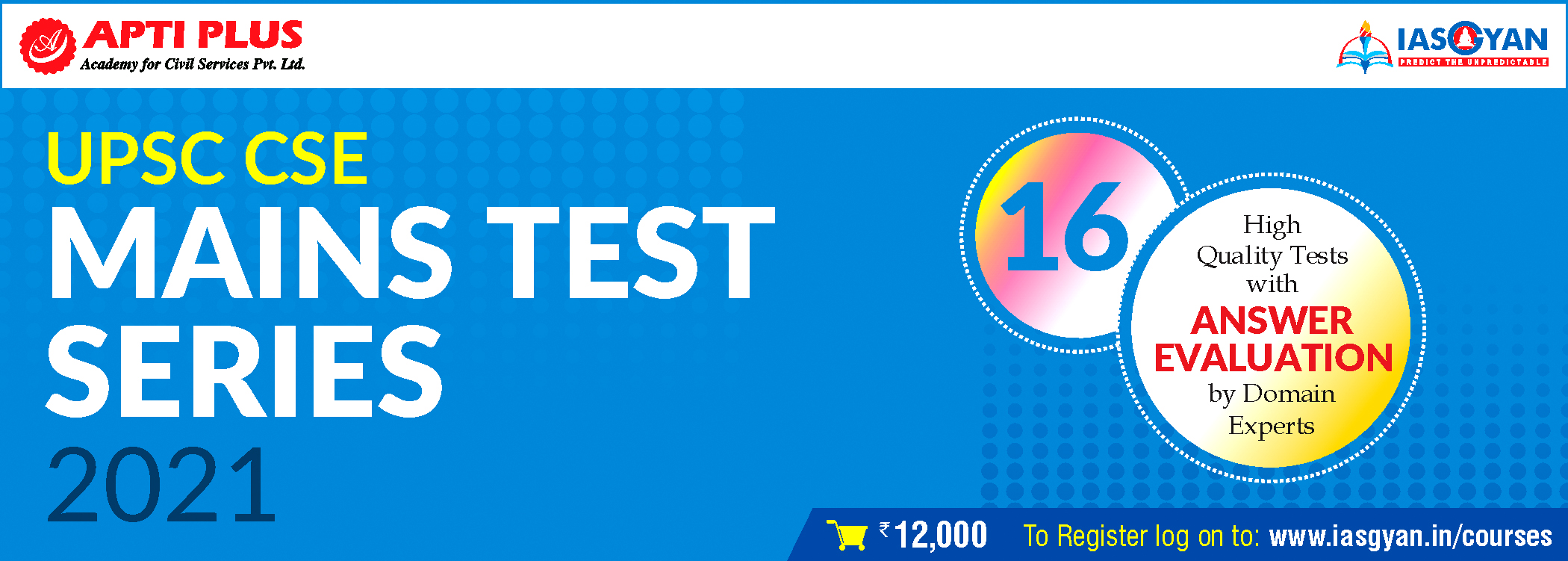STATE OF GANGA

.png)
.png)
.png)

Tributaries of Ganga
|
Left
|
Ramganga, Garra, Gomti, Ghaghara, Gandak, Burhi Gandak, Koshi, Mahananda, Bramhaputra
|
|
Right
|
Yamuna, Tamsa (also called Tons), Karamnasa, Sone, Punpun, Falgu, Kiul, Chandan, Ajoy, Damodar, Rupnarayan
|
.png)
State of Pollution in Ganga
- Over 500 million citizens depend on the River Ganga for life itself, yet our National River remains one of the most polluted in the world.
- The polluted water denies vast populations of their rights to water, and robbing the world of the beauty and sanctity of a river that is worshipped by one billion people as divinity itself.
Source: www.gangaaction.org
.png)
Initiatives to Clean Ganga
- Ganga Action Plan: It was, launched in 1986 by the then Prime Minister Rajeev Gandhi, with the main objective of pollution abatement of the river Ganga.
- Bhuvan Ganga Portal: This App developed by ISRO enables public to collect and report information on various pollution sources that affects the water quality of river Ganga.
- Clean Ganga Fund: It was set up in 2015. The fund invites voluntary contributions from residents of the country and Non-Resident Indian (NRIs) / Person of Indian Origin (PIO) and others.
- Ban on Waste Disposal: The National Green Tribunal banned the disposal of any waste in the Ganga in the year 2017.
- Namami Gange under NMCG
|
NMCG
- National Mission for Clean Ganga (NMCG) was registered as a society in 2011 under the Societies Registration Act 1860.
- It acted as implementation arm of National Ganga River Basin Authority (NGRBA) which was constituted in 2009 under the provisions of the Environment (Protection) Act (EPA),1986.
- NGRBA was dissolved in 2016, consequent to constitution of National Council for Rejuvenation, Protection and Management of River Ganga (referred as National Ganga Council) under EPA 1986.
- Aims and objectives of NMCG:
- To ensure effective abatement of pollution and rejuvenation of the river Ganga.
- To maintain minimum ecological flows in the river Ganga with the aim of ensuring water quality and environmentally sustainable development.
|

Namami Gange
.png)
Working of Namami Gange Programme under NMCG
.png)
Recent key achievements under Namami Gange programme:
Sewerage Treatment Capacity: 85+ Sewerage management projects are under implementation in the States of Uttarakhand,Uttar Pradesh, Bihar, Jharkhand and West Bengal.
River-Front Development: River-Front Development projects for construction, modernization and renovation of 182 Ghats and 118 crematoria are underway.
River Surface Cleaning: River Surface cleaning for collection of floating solid waste from the surface of the Ghats and River and its disposal are underway at multiple locations.
Bio-Diversity Conservation: Several Bio-Diversity conservation projects namely: Biodiversity Conservation and Ganga Rejuvenation, Fish and Fishery Conservation in Ganga River, Ganges River Dolphin Conservation Education Programme have been initiated.
Afforestation: Forestry interventions for Ganga through Wildlife Institute of India; Central Inland Fisheries Research Institute and Centre for Environment Education have been initiated.
Public Awareness: Awareness activities through rallies, campaigns, exhibitions, shram daan, cleanliness drives, competitions, plantation drives are underway to increase community participation in the programme. Gange Theme song was released widely and played on digital media to enhance the visibility of the programme.
Industrial Effluent Monitoring: The number of Grossly Polluting Industries (GPIs) as of 2019 is 1072. Regulation and enforcement through regular and surprise inspections of GPIs is carried out for compliance verification against stipulated environmental norms.
Ganga Gram: MoDWS has already constructed more than 8 lakhs out of the targeted 15 lakhs toilets in 1674 Gram Panchayats of 5 Ganga Basin States. UNDP has been engaged as the executing agency for rural sanitation programme and to develop Jharkhand as a model State.

Challenges however
Sewage treatment – falling far short of the targets
- As per the Namami Gange targets, sewage treatment plants (STPs) with over 2,000 million litre a day (MLD) capacity had to be rehabilitated.
- However, out of a total of 236 projects including STPs had been sanctioned, only 63 had been completed.
- Another area of concern: Data on sewage generation. STPs are designed on the basis of the amount of sewage a city generates.
- But estimations of sewage generation have been found to be inaccurate.
- As per CPCB data the actual measured discharge of wastewater into the Ganga is 123 per cent higher than what has been estimated.
Flow of the river – thinning rapidly
- Experts say the water level in the river is going down at an alarming rate.
- If the flow in the river could be maintained, it would have itself taken care of 60-80 per cent of organic pollutants in the river.
- But numerous hydroelectric projects on the Bhagirathi and Alaknanda have turned the upper stretches of the Ganga into ecological deserts.
- The baseflow amount of the river has decreased by a huge 56 per cent in 2016, as compared to the 1970s.
New toilets, new sludge – but where will it all go?
- 99 per cent villages on the banks of the Ganga have been declared open defecation free (ODF) under the Swachh Bharat Mission.
- But just building new toilets, is not the solution. About 180 MLD of sludge will be generated in the five Ganga Basin states when they become ODF.
- Faecal sludge is a bigger pollutant than sewage. While BOD of sewage is 150-300 mg/litre, that of faecal sludge would be 15,000-30,000 mg/litre.
- The Ganga cannot run clean unless the sludge generated is managed effectively.
.png)
Cost overruns and governance glitches
- The clean-up programme is dogged by delays, which is leading to tremendous cost escalations.
- Only 23 per cent of the sanctioned amount under NMCG had been utilized till 2018.
- Poor governance is adding to the issue.

Way ahead
- Restoring ecological flows at every point along the Ganga’s course.
- Preventing all waste water, starting with sewage and industrial waste, from mixing with the river. Especially along the heavily polluted Kanpur and Varanasi stretches of Ganga.
- Promoting massive water conservation and water resource management. Example- rain water harvesting schemes, at both centralized and decentralized levels within the Ganga River Basin.
- The STPs need to be verified on efficiency, reliability and technology parameters by independent agencies (tech-efficiency-reliability verification).
- Pre-treatment units at STPs or sewage pumping stations, including solid-liquid separation units before faecal sludge enters the STPs.
- Countries like Malaysia have made it mandatory for STPs to have a pre-treatment unit.
- Better enforcement and monitoring, for efficient faecal sludge management .
10 critical steps to Ganga Revival
.png)





.png)
.png)
.png)
.png)
.png)
.png)
.png)
.png)
.png)